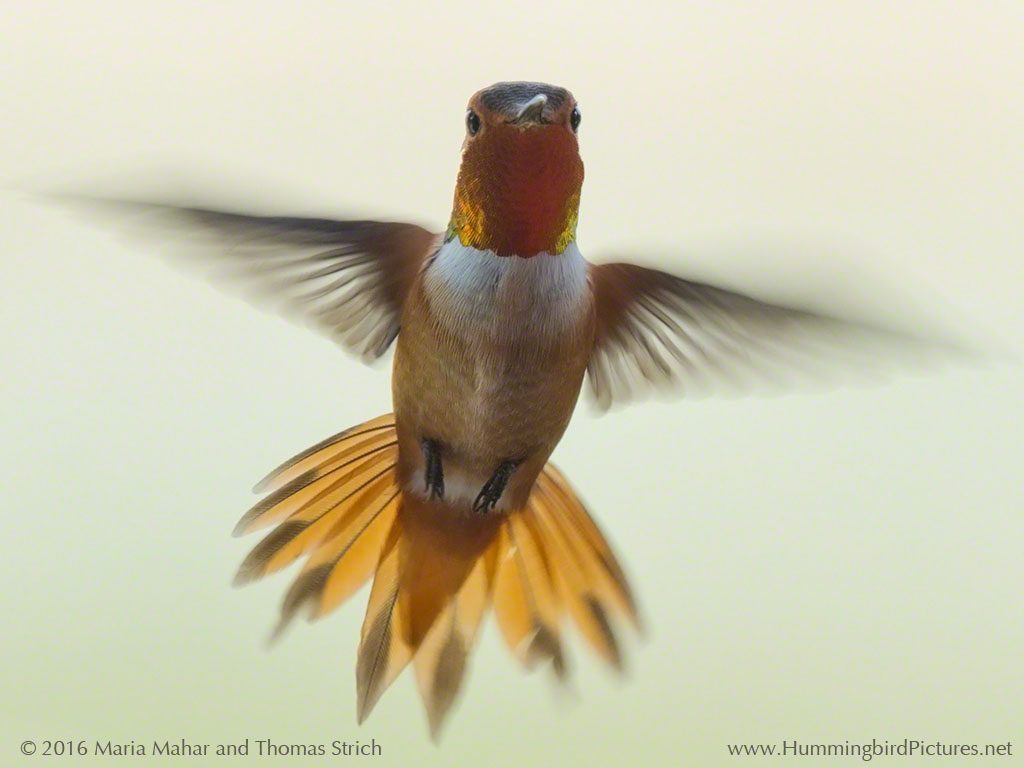
What are hummingbirds?
Hummingbirds are small birds that can hover – or fly in place. Many species have brightly colored and iridescent feathers. Most species have long, thin bills.
Hummingbirds beat their wings rapidly. They can hover for minutes at a time. This is unusual in birds. The ability to hover is the hummingbird’s most unique characteristic.*
Hummingbirds are acrobatic in flight. They can spin in the air, fly backwards, and even fly upside down for short spurts.
The name “hummingbird” comes from the sound the bird’s wings make as it hovers. Most of the small hummingbirds we see in the U.S. beat their wings about 40 to 50 times per second. The wings cut through the air so fast that they create a humming sound.
Hummingbirds eat nectar, the sugary liquid in some flowers, so they are often seen in gardens or near flowers. They also eat insects and spiders.
Where are hummingbirds found?
Hummingbirds are found only in South, Central and North America. More than 330 different species have been identified. Most live in Central and South America.
A small number of hummingbird species live in the United States for all or part of each year. There are about 12 to 15 species that routinely nest in the U.S. A few other species visit.
Ruby-throated Hummingbird and Western Hummingbirds
Hummingbird species in the United States referred to in two groups: the Ruby-throated Hummingbird in the East and Midwest, and the “western hummingbirds”.
The Ruby-throated Hummingbird is common and widespread across the East and Midwest. They are not usually seen in the western United States, though they migrate through Texas in large numbers.
The “western hummingbirds” include about a dozen other species. These hummingbird species are more common in the western states or Texas. They can be widespread, such as the Black-chinned Hummingbird. Or they can be found only in a few places, such as the Blue-throated Hummingbird.
The Rufous Hummingbird is a special case. It is a western hummingbird, but we are learning from bird banding studies that some Rufous spend part of the winter in the southeastern United States. Rufous Hummingbirds are sometimes seen in other eastern states, too.
Hummingbirds in the United States
Here are photos of our most common hummingbirds. These pictures show male hummingbirds. The males usually have more colorful feathers than females, and they are easier to identify. Click links to see more pictures and information about the species.
Allen’s Hummingbird
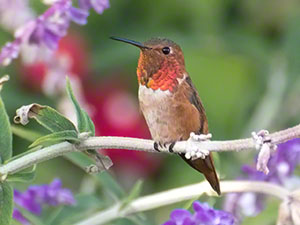
Scientific name: Selasphorus sasin
Size: 3.25 to 3.75 inches
General location: Primarily coastal California and coastal southern Oregon
Anna’s Hummingbird
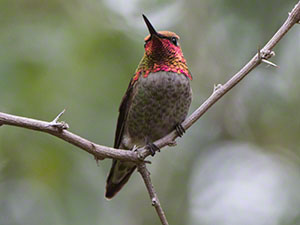
Scientific name: Calypte anna
3.5 to 4 inches
General location: Widespread along Pacific Coast into Canada and inland from southern California through Arizona, southern New Mexico, and southern Texas
Black-chinned Hummingbird
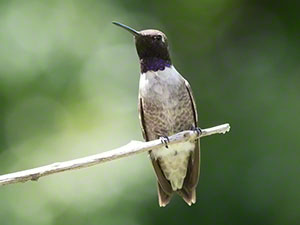
Scientific name: Archilolis alexandri
3.25 to 3.75 inches
General location: Widespread across interior western states up into Canada
Blue-throated Hummingbird
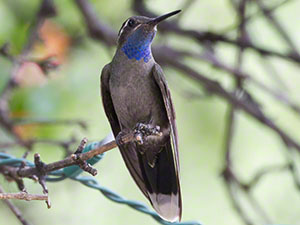
Scientific name: Lampornis clemenciae
4.75 to 5.25 inches
General location: Local to the mountains of SE Arizona, in New Mexico, and Big Bend, Texas
Broad-billed Hummingbird
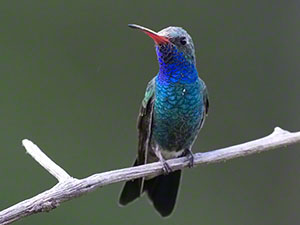
Scientific name: Cynanthus latirostris
3.5 to 4 inches
General location: Somewhat local to southeastern Arizona and southwestern New Mexico
Broad-tailed Hummingbird
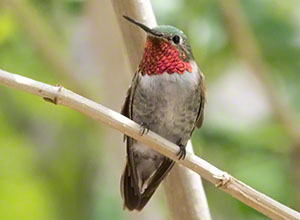
Scientific name: Selasphorus platycercus
3.5 to 4 inches
General location: Western mountain ranges
Buff-bellied Hummingbird
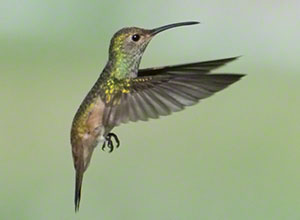
Scientific name: Amazilia yucatanenensis
3.75 to 4.25 inches
General location: Local along the Gulf Coast of Texas and inland, plus along coast to Lousiana (note that this photo is likely not a mature male – we will update this when we get a better photo)
Calliope Hummingbird
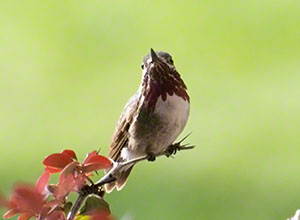
Scientific name: Selasphorus calliope
2.75 to 3.25 inches
General location: Western mountain ranges into Canada
Costa’s Hummingbird
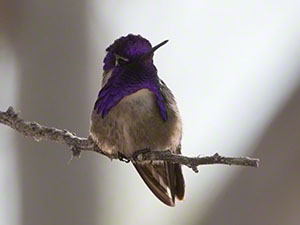
Scientific name: Calypso costae
3 to 3.5 inches
General location: Deserts of California, Arizona, Nevada, Utah and Texas
Lucifer Hummingbird
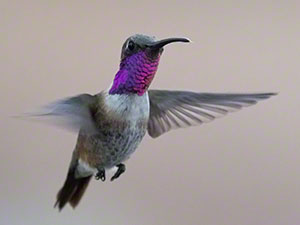
Scientific name: Calothorax lucifer
3.5 to 4 inches
General location: Local to southeastern Arizona, southwestern New Mexico, and southwestern Texas
Magnificent Hummingbird
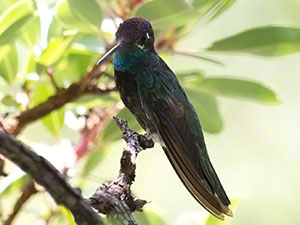
Scientific name: Eugenes fulgens
4.25 to 5.25 inches
General location: Local to mountains of southeastern Arizona, southwestern New Mexico, and western Texas
Ruby-throated Hummingbird
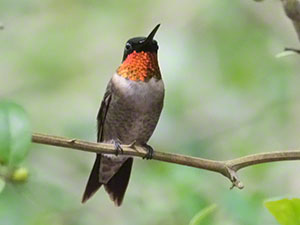
Scientific name: Archilochus colubris
3.125 to 3.75 inches
General location: Widespread and common across the eastern United States and Canada
Rufous Hummingbird
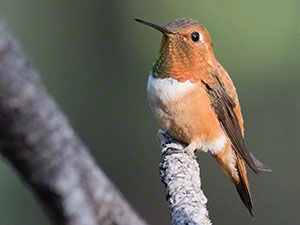
Scientific name: Selasphorus rufus
3.25 to 3.75 inches
General location: Widespread across the west into Alaska and Canada. Some overwinter in southeastern states. Scientists are learning that Rufous Hummingbirds can be seen across the U.S.
When are they here?
Most hummingbirds arrive in the United States in late winter or early spring. They come to breed and nest. They spend the spring and summer here, then return south to Mexico and Central America.
Depending where you live, hummingbirds may come through briefly on migration, or they may stay for months. Allen’s Hummingbirds and some Anna’s Hummingbirds stay year round. A few individuals of other hummingbird species stay over winter, too.
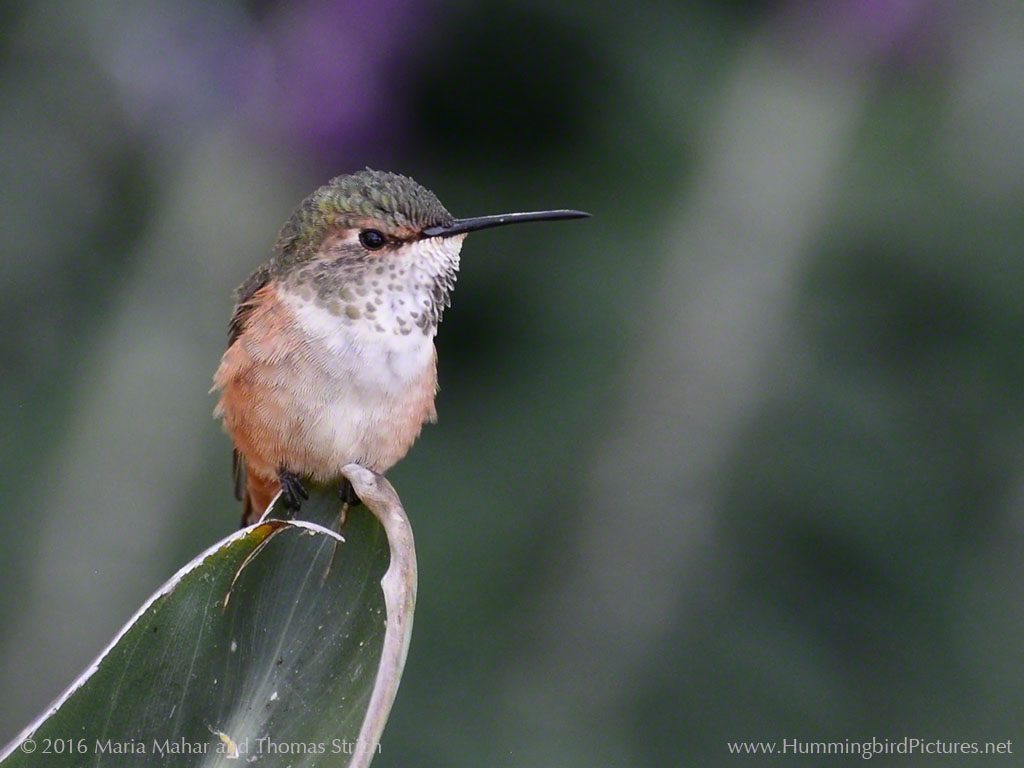
More Facts about Hummingbirds in the U.S.
- The smallest bird that nests in the U.S. is the Calliope Hummingbird. It weighs about as much as a U.S. penny.
- Hummingbirds can fly backward – and they do, often. They back away from flowers and feeders.
- Hummingbirds are “pollinators”. When they visit flowers to feed, they sometimes get pollen on their bill, head, or chest. When they visit the next flower, the pollen is transferred onto the new flower. This allows the plant to form seeds.
- Hummingbirds eat 1.5 to 5 times their own weight in food each day. They need time to digest. They are not always flying; they spend part of each day perching.
- Hummingbirds open their bill wide to catch flying insects.
- Hummingbirds need to stay warm to survive. When they are low on fuel, they can go into “torpor” to conserve energy. Torpor is a temporary hibernation-like state where breathing and heart rate slow drastically. If a hummingbird goes into torpor overnight, it will look for food immediately when it rouses in the morning.
- Hummingbirds chatter and make high-pitched sounds to “vocalize”. They use calls to communicate and to warn each other away.
- Female hummingbirds build the nest and raise the chicks on their own.
- Hummingbirds have predators. They can be caught by certain larger birds, such as Kestrels, by cats, or by other predators.
- Hummingbirds can live a surprising long time. Here are records that show some individual birds live more than 11 years. However, scientists think that many hummingbirds do not survive their first year.
- Migrating hummingbirds fly hundreds, or thousands, of miles each year.
- Hummingbirds have been studied by scientists to learn how they hover, how their tongues work, and how they survive in general.
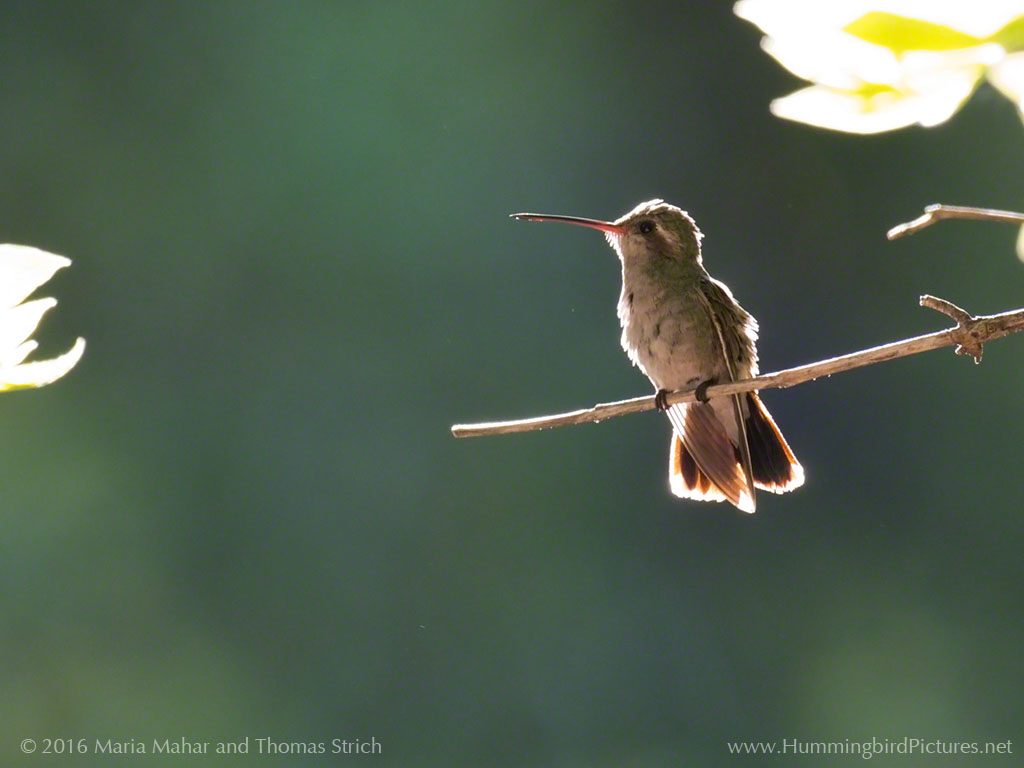
Learn about attracting hummingbirds and about hummingbird feeders.
Discover Hover: Hummingbirds in the United States, an interactive ebook.
Learn about Hummingbird Pictures and us.
If you enjoyed this page, please share it!
Return to home.
References
Birds of North America Online, The Cornell Lab of Ornithology
The Hummingbirds of North America, Paul Johnsgard
Hover: Hummingbirds in the United States, Maria Mahar and Thomas Strich
North American Hummingbirds: An Identification Guide, George West
A Field Guide to the Hummingbirds of North America, Sheri L. Williamson
*Personal communication, Dr. Donald R. Powers, Professor at George Fox University, researcher, and author
Many other hummingbird reference materials
Personal field experience